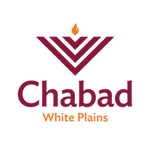When is Rosh Hashanah 2026?
Rosh Hashanah 2026, which ushers in the Jewish year 5787, starts just before sundown on Friday, Sept. 11, 2026, and ends after nightfall on Sunday, Sept. 13, 2026.
Observed on the day G‑d created Adam and Eve, it’s celebrated as the head of the Jewish year. The central observance of Rosh Hashanah is blowing the shofar (ram’s horn).
Rosh Hashanah feasts traditionally include round challah bread (studded with raisins) and apples dipped in honey, as well as other foods that symbolize our wishes for a sweet year.
Read: What Is Rosh Hashanah?
When is shofar blowing on Rosh Hashanah 2026?
This year, the shofar is blown on Sunday (Sept. 13). If you are unable to attend services, please contact your rabbi to arrange for a home visit, which can take place any time before sundown.
Read: The Shofar
Can you make a chart showing what to do when?
| Rosh Hashanah Eve (Sept. 11) | Rosh Hashanah Morning (Sept. 12) | Second Night (Sept. 12) | Second Day (Sept. 13) | |
|---|---|---|---|---|
| Shofar 🎶 | ✅ Shofar is not blown as it's Shabbat | ✅ Ideally at morning services | ||
| Candles 🕯 | ✅ 18 mins. before sunset (Shehecheyanu) | ✅ Post nightfall, from pre-existing flame (Shehecheyanu) | ||
| Kiddush 🍷 | ✅ (Shehecheyanu) | ✅ Short text | ✅ (Shehecheyanu) | ✅ Short text |
| Round Challah in Honey 🍯 | ✅ After handwashing and Hamotzi | ✅ After handwashing and Hamotzi | ✅ After handwashing and Hamotzi | ✅ After handwashing and Hamotzi |
| Special Fruit 🍎 | ✅ Apple in honey after challah 🍎 (Yehi Ratzon) | ✅ New fruit after Kiddush 🍍 | ||
| Fish Head 🐟 & Symbolic Foods 🥕 | ✅ After challah | |||
| Tashlich 🌊 | ✅ Brief prayer at water |
What are the Rosh Hashanah greetings for this year?
The catch-all greeting, which is good for the entire season, is shanah tovah, which means “good year.”
Is Rosh Hashanah the Jewish New Year?
Rosh Hashanah is indeed the New Year in the sense that it marks the start of the Jewish calendar year. Unlike the secular New Year’s Day, it is a holy time, dedicated to prayer, feasting, and hearing the shofar in synagogue.
What do we do the day before?
On Friday, Sept. 11, 2026, the day before Rosh Hashanah, we prepare for the holiday.
After morning services, which includes Selichot (prayers for forgiveness), men participate in the “Hatarat Nedarim,” the annulment of (unwanted) vows.
May we cook and bake on the holiday?
You may bake or cook from a pre-existing flame if the holiday. So leave the oven on (on "Sabbath mode") and have your burners on before the onset of the holiday.
Since Rosh Hashanah coincides with Shabbat this year, all the food must be cooked, baked or reheated before Shabbat and the holiday begin.
Read: The Laws of Yom Tov
When to light candles on Rosh Hashanah 2026?
We light candles each evening of Rosh Hashanah:
- Friday, Sept. 11, 2026, before sundown
- Saturday, Sept. 12, 2026, after nightfall (from a pre-existing flame)
How is Rosh Hashanah eve observed?
The Rosh Hashanah synagogue services are all in the Machzor, the High Holiday prayerbook. The holiday evening synagogue services are fairly brief, shorter than an ordinary Shabbat (since there is no Kabbalat Shabbat) with a special holiday Amidah.
After services, on the first night, we greet one another with “Leshanah tovah tikatev v’teichatem” (לשנה טובה תכתב ותחתם). When greeting a female, this is modified to “Leshanah tovah tikatevee v’teichatemee” (לשנה טובה תכתבי ותחתמי). This means “May you be written and sealed for a good year.”
Our festive meal begins with the Rosh Hashanah Kiddush, enjoying challah dipped in honey, and the symbolic foods expressing our wish for a good, sweet year (apple and honey, fish head, pomegranate, etc.).
When and how to dip the apple in honey?
Apple in honey is a tasty snack you are free to enjoy whenever you wish. The most common custom is to eat it on the first night of Rosh Hashanah, after we have washed our hands and had our round challah dipped in honey.
Before eating the apple, say:
- Bah-rookh ah-tah ah-doh-noi eh-loh-hay-noo meh-lekh hah-oh-lahm bo-ray pe-ree hah-etz
(“Blessed are You, L‑rd our G‑d, King of the universe, who creates the fruit of the tree.”)
- Yeh-hee rah-tzohn mee-leh-fah-neh-khah sheh-tih-kha-desh ah-lay-noo shah-nah to-vah oo-meh-too-kah (“May it be Your will to renew for us a good and sweet year.”)
You then enjoy your head of a fish (ram), pomegranates, carrots, and all the other symbolic foods.
What happens on the second day?
The second night of Rosh Hashanah (Saturday, Sept. 12) includes the following elements:
- Prayer services at synagogue, just like the first night
- Holiday candles (from a pre-existing flame, after night has fallen), with the added blessing of Shehecheyanu
- Kiddush over wine (with Shehecheyanu, if you did not say it when lighting candles)
- A new fruit, enjoyed immediately after Kiddush
- Round challah, often studded with raisins
- A festive meal, all of which must be prepared after night has fallen
It typically does not include apples in honey, fish head, and the other symbolic foods we enjoyed the night before.
Services on the second day of Rosh Hashanah (Sunday, Sept. 13) are very similar to the day before, except that the Torah reading and haftarah are different (instead of reading about the births of Isaac and Samuel, we read about the Binding of Isaac and G‑d’s love for us), and certain piyyutim (liturgical poems) in the repetition of the Amidah are changed.
When to do Tashlich in 2026?
Tashlich, in which we stand near a body of water and ask G‑d to cast our sins away, is done in the late afternoon on the first day of Rosh Hashanah, when it coincides with Shabbat, as is the case this year, we do it the next day, (Sunday, Sept. 13, 2026). You can print the text of Tashlich here in advance.
When and how do we make Havdalah?
Havdalah, the ceremonial sendoff for the holiday, is said after night has fallen on Sun., Sept. 13, 2026. Unlike the post-Shabbat Havdalah, we do not say a blessing over a flame or fragrant spices. Rather, we say the basic text while holding a cup of wine, which we drink afterward.
Read: How to Make Havdalah?
Do I make an Eruv Tavshilin?
No. An Eruv Tavshilin is a mechanism that allows us to cook and bake on a holiday (Yom Tov) for the Shabbat that immediately follows. Since Rosh Hashanah is not followed by Shabbat this year, there is no need for an Eruv Tavshilin.















Join the Discussion